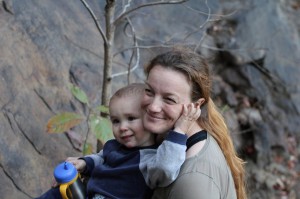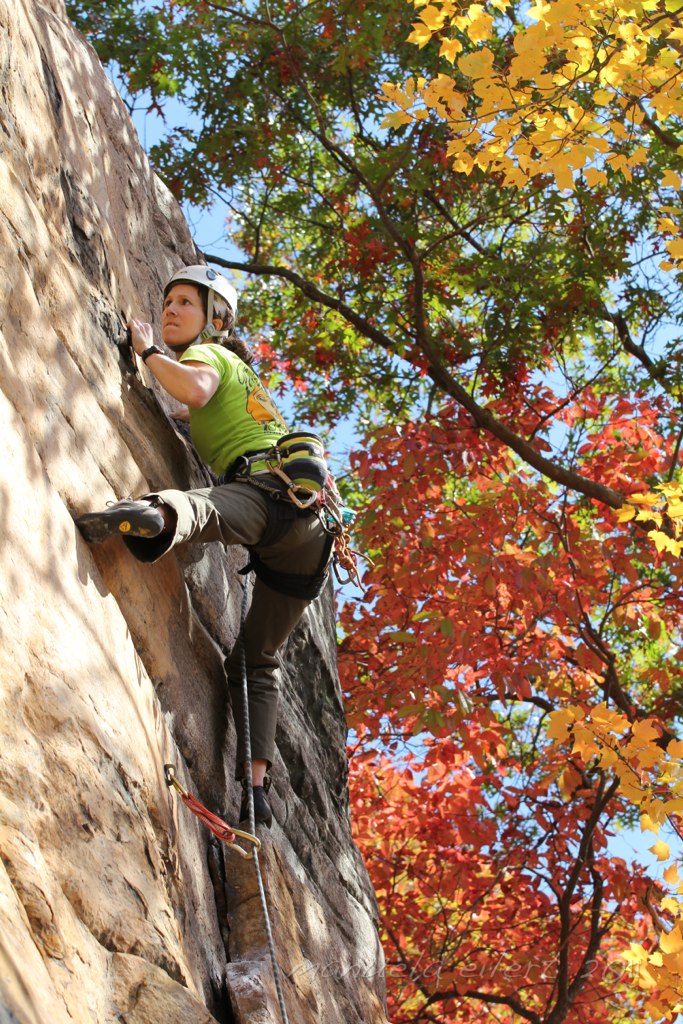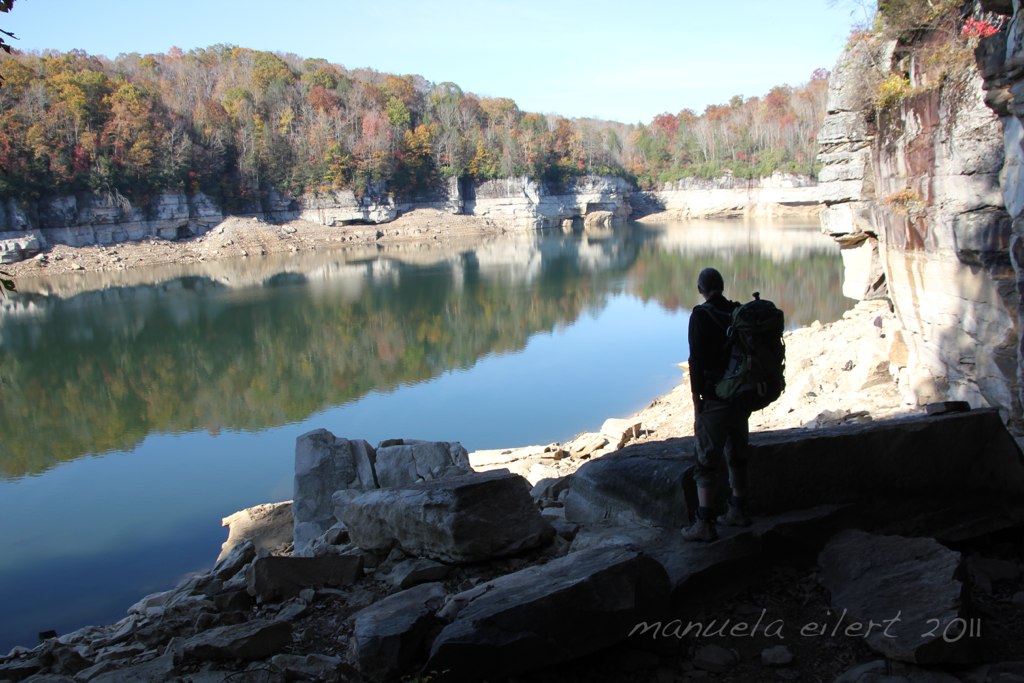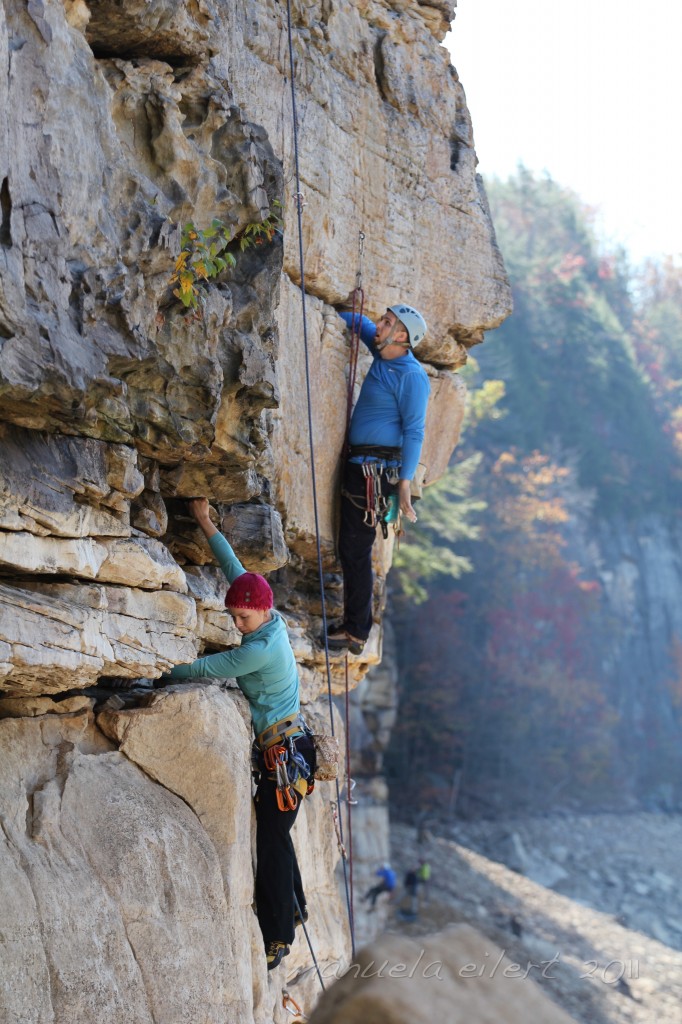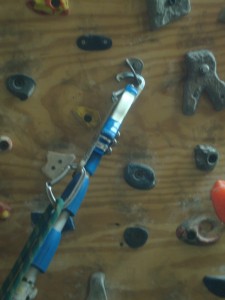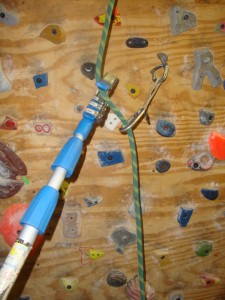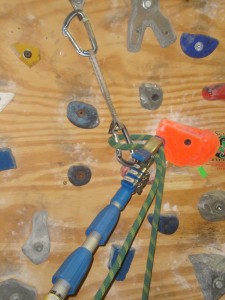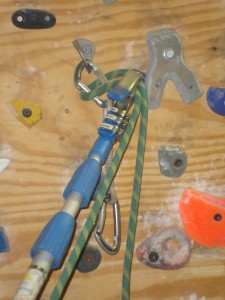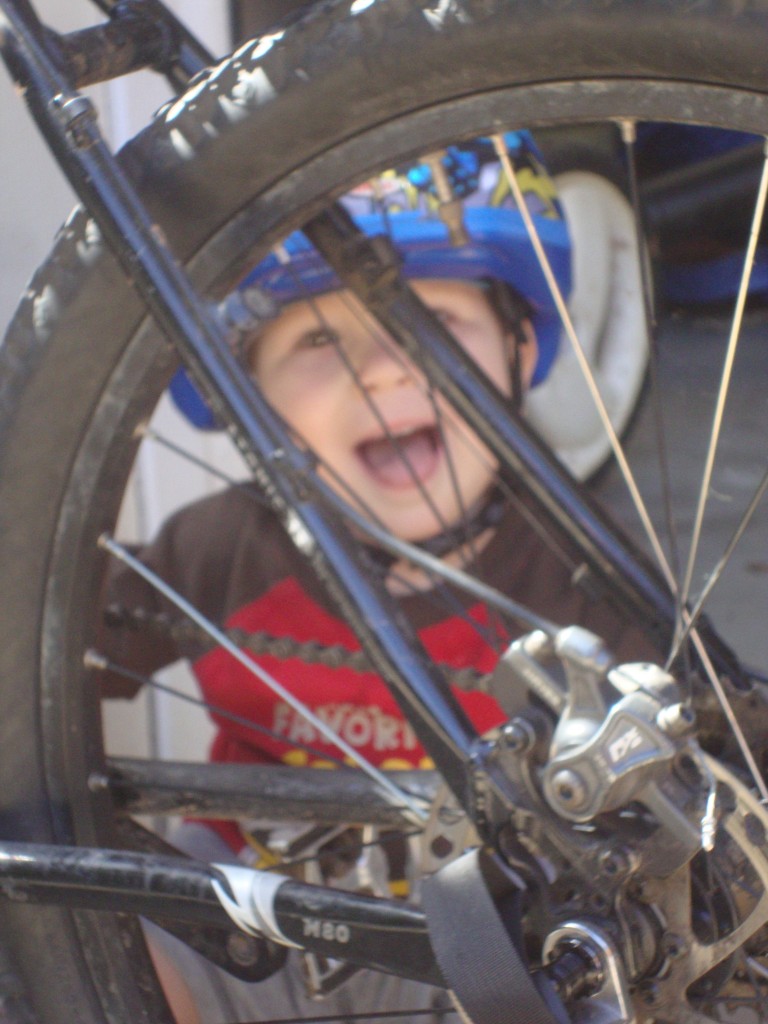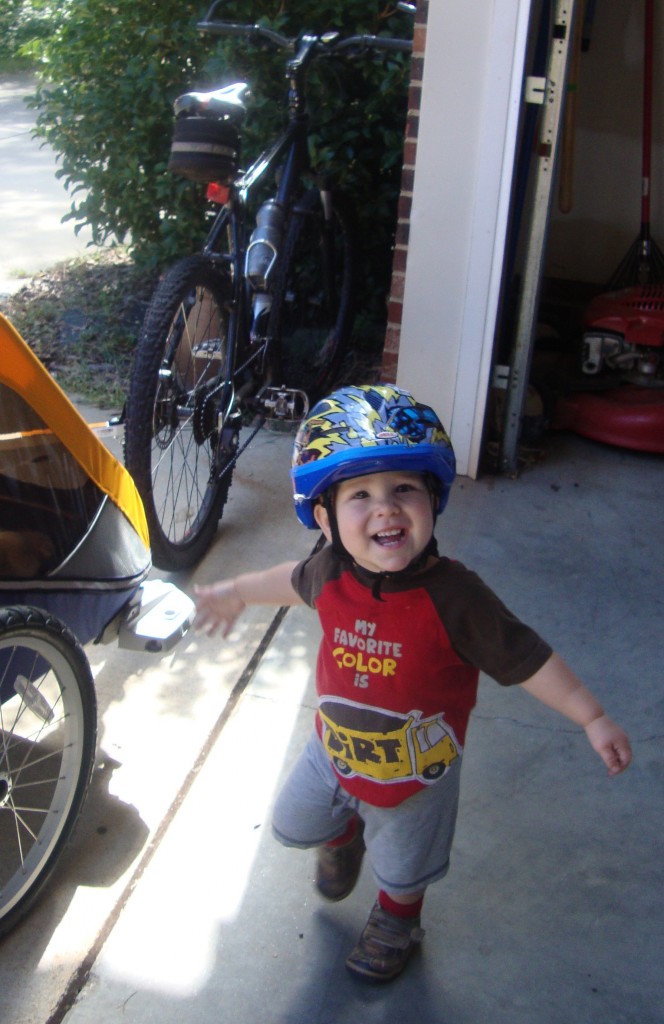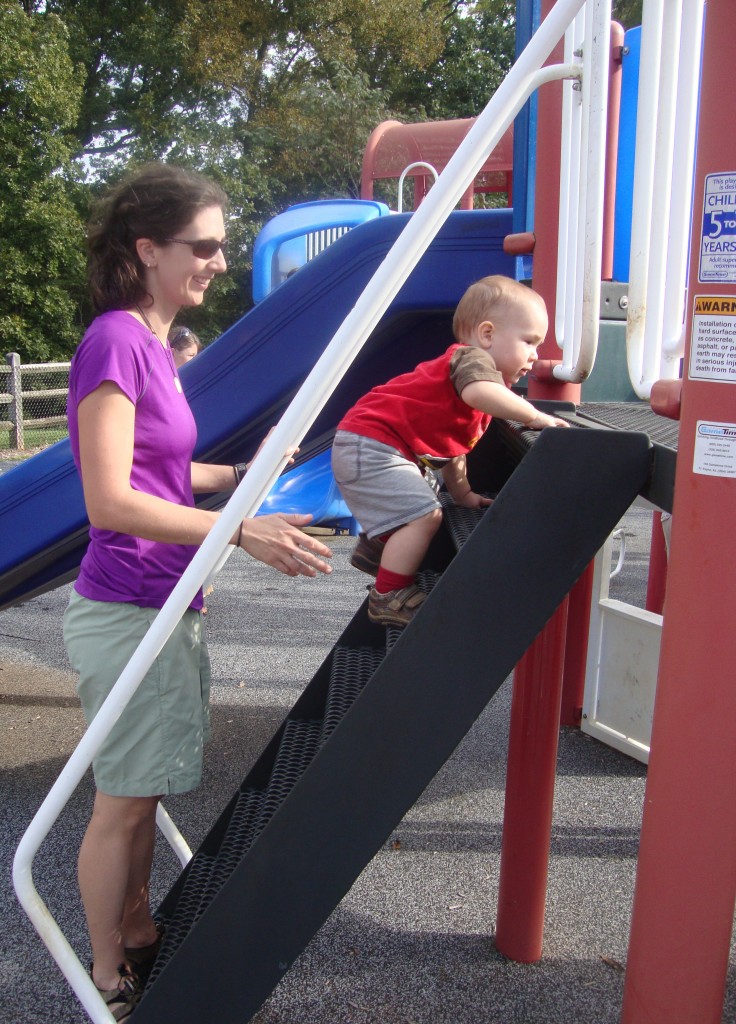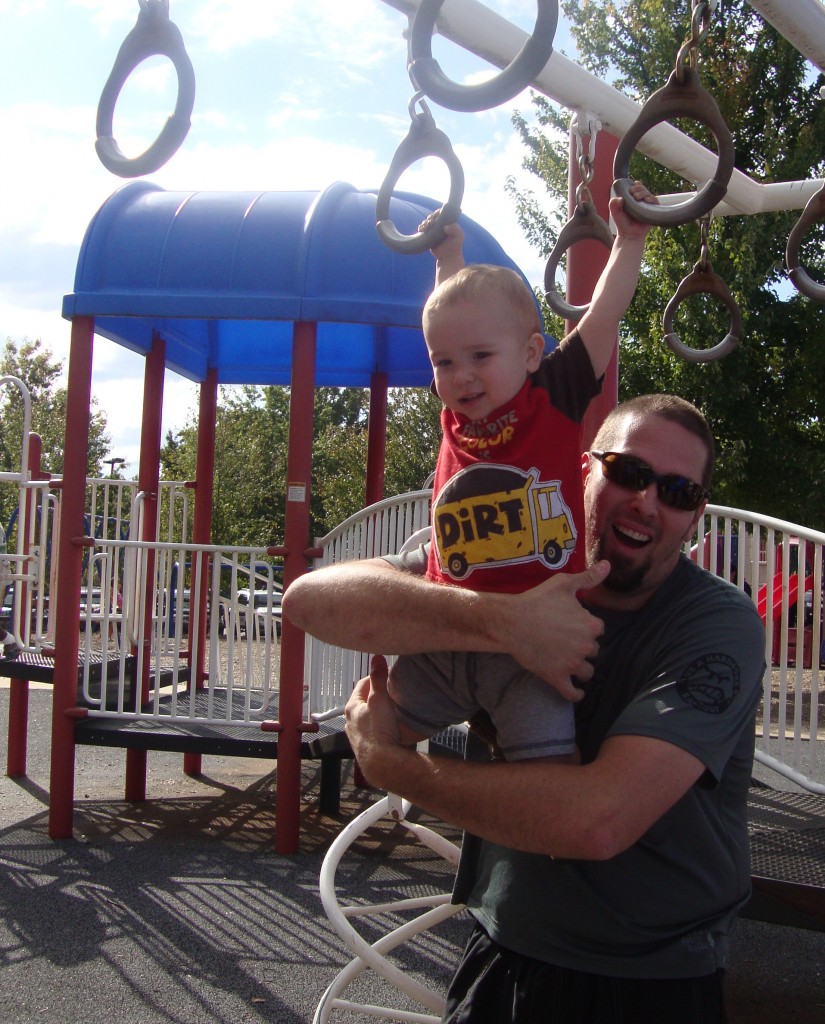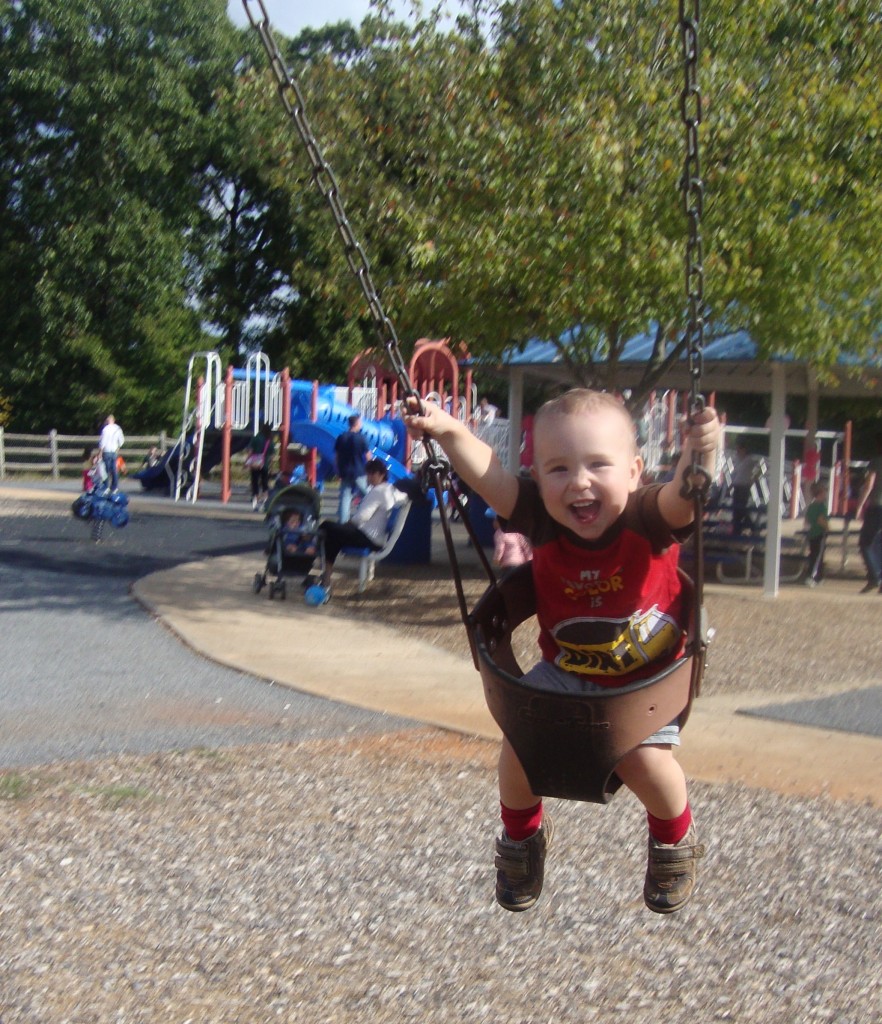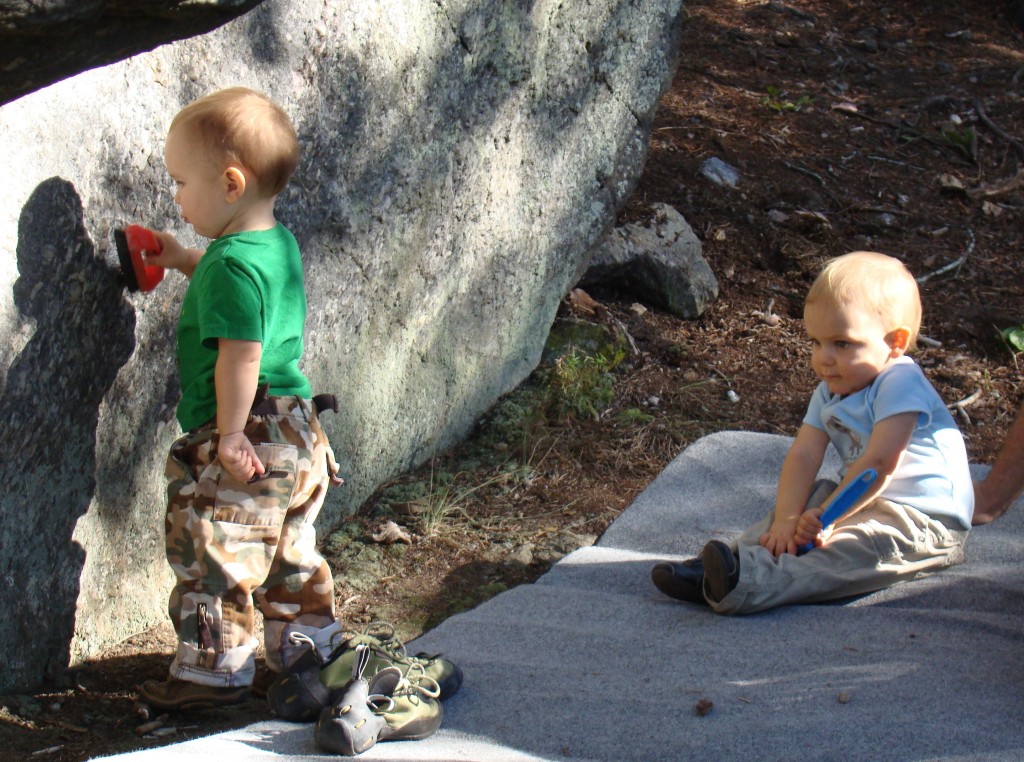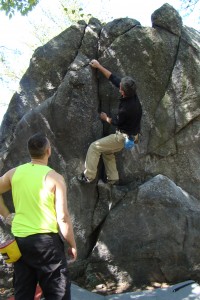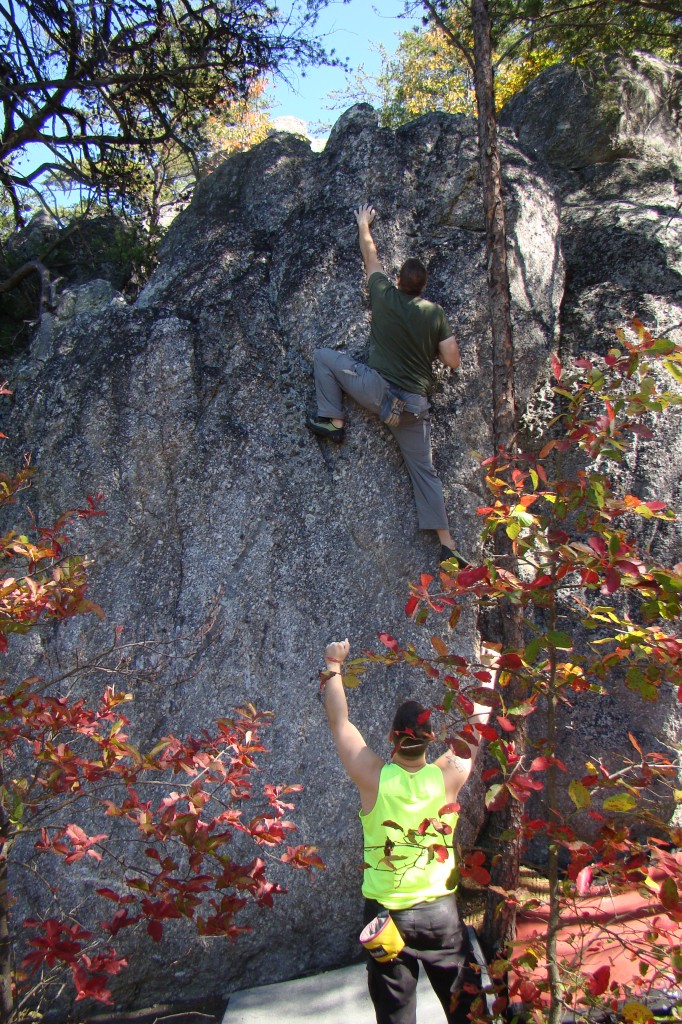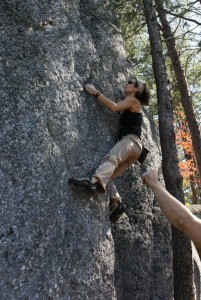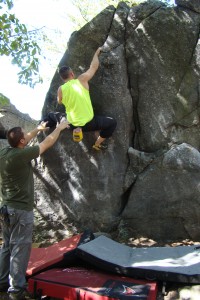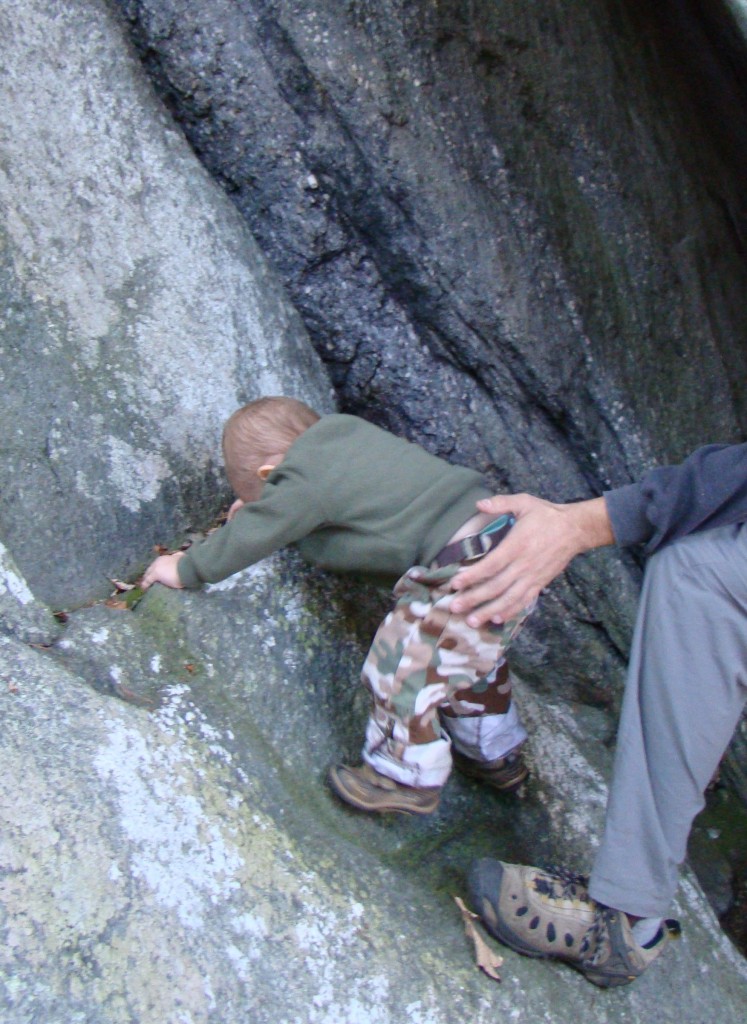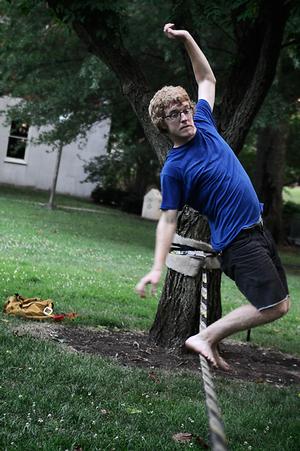Rocktober-fest at the New River Gorge
After a small string of crappy weather trips a few weekends back, I was starting to think our rain curse was back…but au contraire! Despite both nights plummeting to a frosty 35 degrees, the daytime temps went from frigid to an ideal 60 degrees within a couple of hours of the sun rise, much to everyone’s delight. Although we had a pretty big crew with a wide range of skill levels represented, I think everyone managed to get their fair share of pump and exposure, along with a healthy dose of fall color.
We spent Saturday at Endless Wall, which is probably my favorite place to climb at the New River Gorge. An even mix of both sport and trad, the nearly five miles of continuous cliffline features mostly technical face climbing (as well as several amazing cracks) on near perfect rock with amazing exposure. Most of the lines are long, rope-stretching single pitches – ending with a spectacular view of the river (dotted with rafters in the warmer months).
Day 1 Routes –
Stroke Victim (5.8) – This 50 foot trad climb is a short little ditty that climbs Finial Point, a detached spire right off the trail. I thought the gear was adequate (though certainly not plentiful), and the crux was not protected well, so it wouldn’t be a good one for someone with 5.8 as a limit.
Euronation (5.11c)– A long time favorite that always feels good to send. Nail the V3 boulder problem down low, then enjoy a reward of 10b face climbing for another 80 feet.
Flash Point (5.11d/12a) – Hmmm, not sure how I felt about this one…Loved it? Can’t say that. Hated it? No, that’s too strong. Proud of myself for tackling it? Yes, definitely. I was forewarned that this was definitely 12a for the sub-6 ft crowd, which I would have to say was quite the understatement. Not one but two dynos (one of which had horrible feet), along with an insanely long reach (picture one hand pressed out completely to finger tips, then add a little deadpoint). At least it was really well bolted (12 for 100 feet), so the struggle was all physical. It took me 45 minutes to hang dog my way up it, and I almost bailed twice, but it felt good to push myself. Without a doubt the most sustained hard route I’ve ever led.
Leave It To Jesus (5.11c)– After feeling guilty for taking so long on Flash Point, I was happy to clean this outrageous crack line for Sam, who’s been projecting it for a while. (Note for Non-climbers – “cleaning” a route means going up last and removing all of the gear, not a big deal on bolted routes, but can sometimes be a pain on trad routes.) I’m so glad I did however, since it ended up being my favorite line of the day! Aside from hanging twice to bang on a few stubborn stoppers that were trying hard to get stuck, I had no trouble with the actual climbing, and felt like the sequences flowed together perfectly.
Voyeur Variation (5.10a) – What a great way to end the day! This mixed line is a variation to a rarely done sport route that goes out a gigantic roof. Face climb past two bolts (the moves are very “sporty” and felt odd doing them with a rack). Then plug some gear in the roof and continue around left up a perfect dihedral. Very good gear stances and straightforward climbing makes this a perfect route for a trad leader breaking into 5.10 territory.
Our group designated Sunday as “Send-day” and opted to bask in the sunshine over at Whippoorwill, where most of the lines there can only be reached on foot when the water is low in the fall and early spring. This area boasts a lot of bolted moderate lines, as well as a wall filled with intimidating and aesthetic 5.11’s, but the best part about it is the setting – sun-drenched white stone set against a backdrop of a clear lake and autumn in full swing!
Day 2 Routes –
Masuko (5.11a) – Not a typical warm-up for me, but after all, it was Sunday Send-day, right? I’d been waiting to give this sucker another go since last spring, when a thundershower had thwarted my redpoint dreams. My redpoint run went textbook how I wanted it to go, and set a great tone for the rest of the day. This fantastic route is a line I could do over and over again – technical layback crux about halfway up, followed by long moves to good but rounded holds, the kind that are just slopey enough to get your pump clock ticking. Pretty stout for the grade, but a classic for sure.
Nonamayet (5.11a) – This line felt physically easier than Masuko, but was a little harder to read, especially towards the top. There was a lot of weird undercling action, and I almost blew the onsight at the top on some intermediate slopers but thankfully gained the flake I needed at the last minute.
Bender (5.11d)– There was a runout at the top of at least 20 feet on terrain that another party informed us was 5.10+. (Another non-climber note – A “runout” occurs when there is a section of rock on a route that is not protected well, either because the bolts are really far apart or because the nature of the rock in that section doesn’t lend itself well to taking gear placements. A fall in a runout for a lead climber will therefore be a LOT longer and potentially more serious than the same type of fall on well-protected terrain). A 5.10+ runout didn’t sound appetizing to me but the route looked like fun, so I toproped it after Bennett put it up – and although I didn’t have any trouble in that section, was very much satisfied with my decision.
Kazuko (5.11b) – This line started on top of a big ledge (its a “tree island” when the water is high) in the corner. It got two stars in the guidebook so I decided to give it a whirl, although in hindsight I don’t see how it got any stars, and I promise I’m not just saying that because I had a hard time with it! This would definitely be a challenging onsight – deceptive, beta-intensive sequences, sandy holds, spider webs galore, and oh yeah, a softball sized block crumbled under my feet when I tried to rock onto a bulge, leaving me with a slightly busted up shin and feeling pretty timid for the rest of the route. (Ironically enough this happened a mere two weeks after my giveaway post about helmets, where there ended up being quite a discussion in the comments thread surrounding rock quality and helmets.)
So we ended up with two stellar days of climbing interspersed with a few tall tales around the campfire, a hearty meal at Pies n Pints, and lots of gorgeous fall scenery. I wish we could have gotten in a few more routes each day, but what we did squeeze in was definitely quality. We couldn’t have asked for better climbing conditions (although I’m sure no one would have been complaining about an extra 10 degrees or so at night…) This was more than likely our last trip to the New until spring of next year, so it was a great way to wrap up a fabulous season where lots of projects were sent and many fun memories were made! (And oh yeah, our favorite climbing photog, Manuela Eilert was on this trip, so that of course means photo gallery! Click here to check it out).

